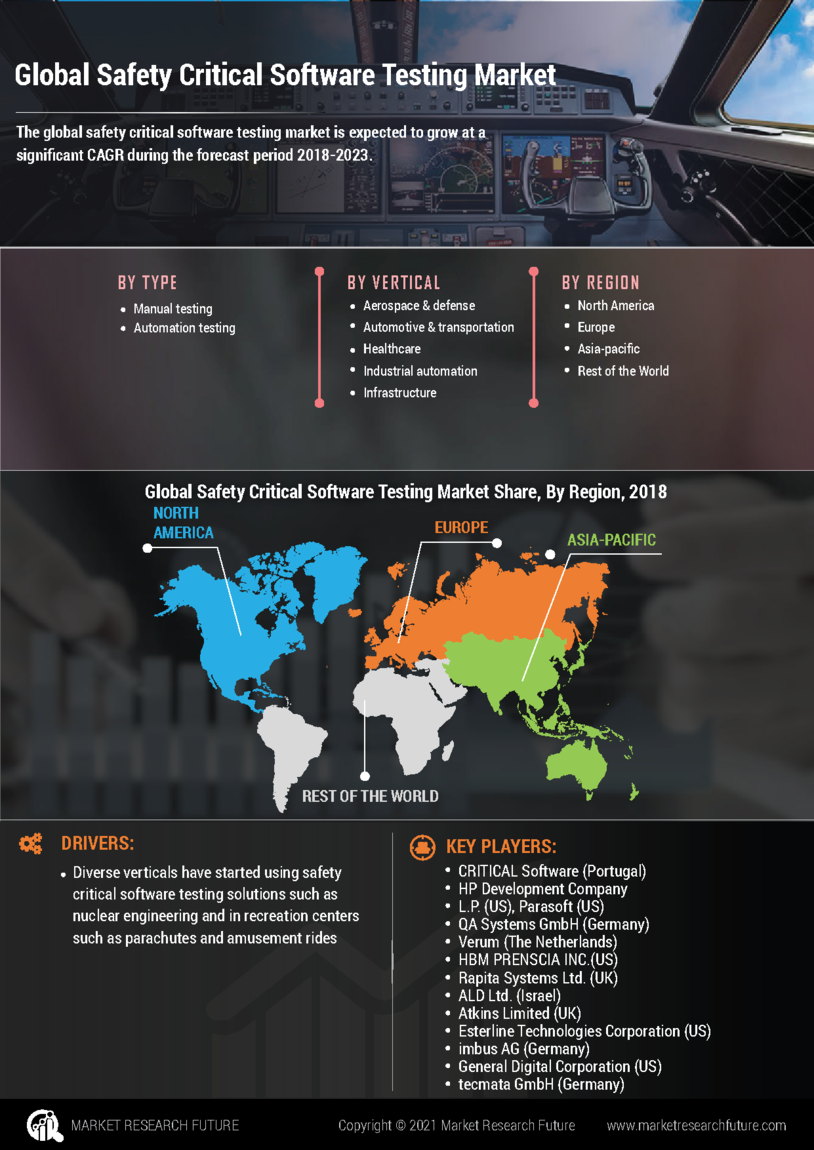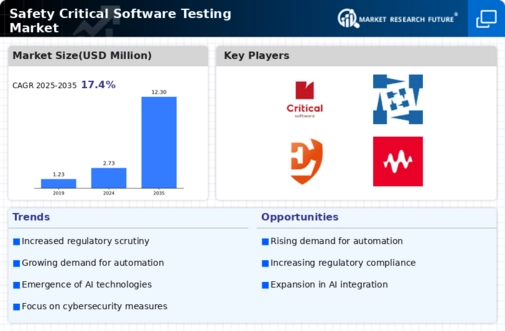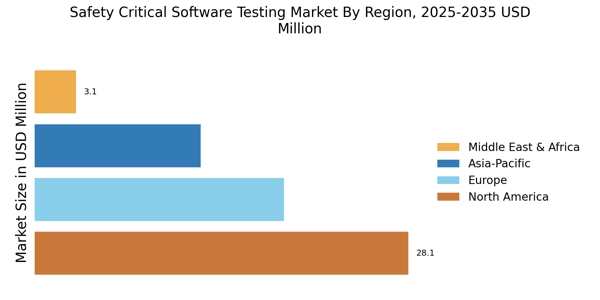Increased Focus on Cybersecurity
The increased focus on cybersecurity is emerging as a crucial driver for the Safety Critical Software Testing Market. With the rise of cyber threats, organizations are compelled to ensure that their safety-critical software is not only functional but also secure from potential attacks. Industries such as finance, healthcare, and transportation are particularly vulnerable to cyber threats, making robust testing essential. The need for security testing in conjunction with functional testing is becoming more pronounced, as breaches can have catastrophic consequences. As a result, companies are likely to invest more in safety critical software testing to address these cybersecurity challenges, thereby stimulating market growth. This trend indicates a shift towards integrated testing approaches that encompass both safety and security.
Regulatory Compliance Requirements
The increasing emphasis on regulatory compliance is a primary driver for the Safety Critical Software Testing Market. Various sectors, including aerospace, automotive, and healthcare, are subject to stringent regulations that mandate rigorous testing protocols. For instance, the Federal Aviation Administration (FAA) and the Food and Drug Administration (FDA) impose strict guidelines on software used in safety-critical applications. This regulatory landscape compels organizations to invest in comprehensive testing solutions to ensure compliance, thereby driving market growth. The demand for certified testing processes is expected to rise, as non-compliance can lead to severe penalties and safety risks. Consequently, companies are likely to allocate more resources towards safety critical software testing to meet these regulatory demands, which in turn fuels the expansion of the market.
Rising Complexity of Software Systems
The rising complexity of software systems is a notable driver for the Safety Critical Software Testing Market. As systems become more intricate, the potential for software failures increases, necessitating more rigorous testing protocols. Industries such as automotive and healthcare are particularly affected, as they rely on complex software for critical operations. According to industry reports, the number of software components in modern vehicles has surged, leading to heightened safety concerns. This complexity drives organizations to invest in comprehensive testing strategies to ensure reliability and safety. Consequently, the demand for specialized testing services and solutions is expected to grow, further propelling the safety critical software testing market.
Growing Demand for Automation in Testing
The growing demand for automation in testing processes is a significant driver for the Safety Critical Software Testing Market. Automation enhances the efficiency and speed of testing, which is particularly vital in safety-critical environments where time is of the essence. Organizations are increasingly adopting automated testing solutions to reduce human error and improve test coverage. This shift is evident in sectors such as aerospace and automotive, where the need for rapid testing cycles is paramount. Reports indicate that automated testing can reduce testing time by up to 50%, allowing for quicker deployment of safety-critical software. As the demand for faster and more reliable testing solutions continues to rise, the safety critical software testing market is likely to experience substantial growth.
Technological Advancements in Testing Tools
Technological advancements in testing tools are significantly influencing the Safety Critical Software Testing Market. The emergence of sophisticated testing tools, such as automated testing frameworks and simulation software, enhances the efficiency and accuracy of testing processes. These innovations allow for more thorough testing of complex systems, which is crucial in safety-critical environments. For example, the integration of machine learning algorithms into testing tools can identify potential vulnerabilities more effectively than traditional methods. As organizations increasingly recognize the importance of robust testing in mitigating risks, the adoption of these advanced tools is likely to accelerate. This trend not only improves testing outcomes but also contributes to the overall growth of the safety critical software testing market.


















Leave a Comment